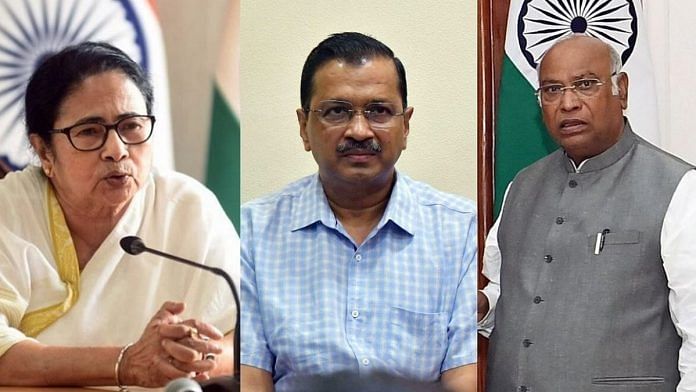Congress president Mallikarjun Kharge stands out as the opposition’s strongest choice as the prime ministerial candidate against Narendra Modi in the 2024 Lok Sabha election. The idea gained traction during the 4th meeting of the INDIA bloc on 19 December when West Bengal chief minister and Trinamool Congress leader Mamata Banerjee urged Kharge’s elevation as the alliance’s PM face, a proposal backed by Delhi chief minister and Aam Aadmi Party leader Arvind Kejriwal. The momentum solidified when Kharge was unanimously elected as the INDIA bloc’s chairperson on 13 January.
Several factors make Kharge an attractive choice for the opposition parties. Beyond being a viable alternative to Rahul Gandhi, often described as a BJP asset, Kharge’s Dalit identity and the community’s shifting voting patterns play a crucial role.
The Dalit vote is important not just for the Congress, but also for the TMC and AAP at the state level. Given that the Scheduled Castes comprise 16.6 per cent of India’s population, per the 2011 Census, holding out the promise of giving India its first Dalit Prime Minister could yield serious political dividends.
Also Read: Three battlefields for INDIA to fight in 2024—and defeat BJP
Dalit vote shifting from Congress
Dalits were primarily Congress voters until 1971, when they started diversifying with the arrival of regional parties. Even then, the Congress maintained its dominance for several decades. But now, at the national level, the BJP is gaining support among the community. To make a comeback at the national level, Congress desperately needs the votes of Dalits.
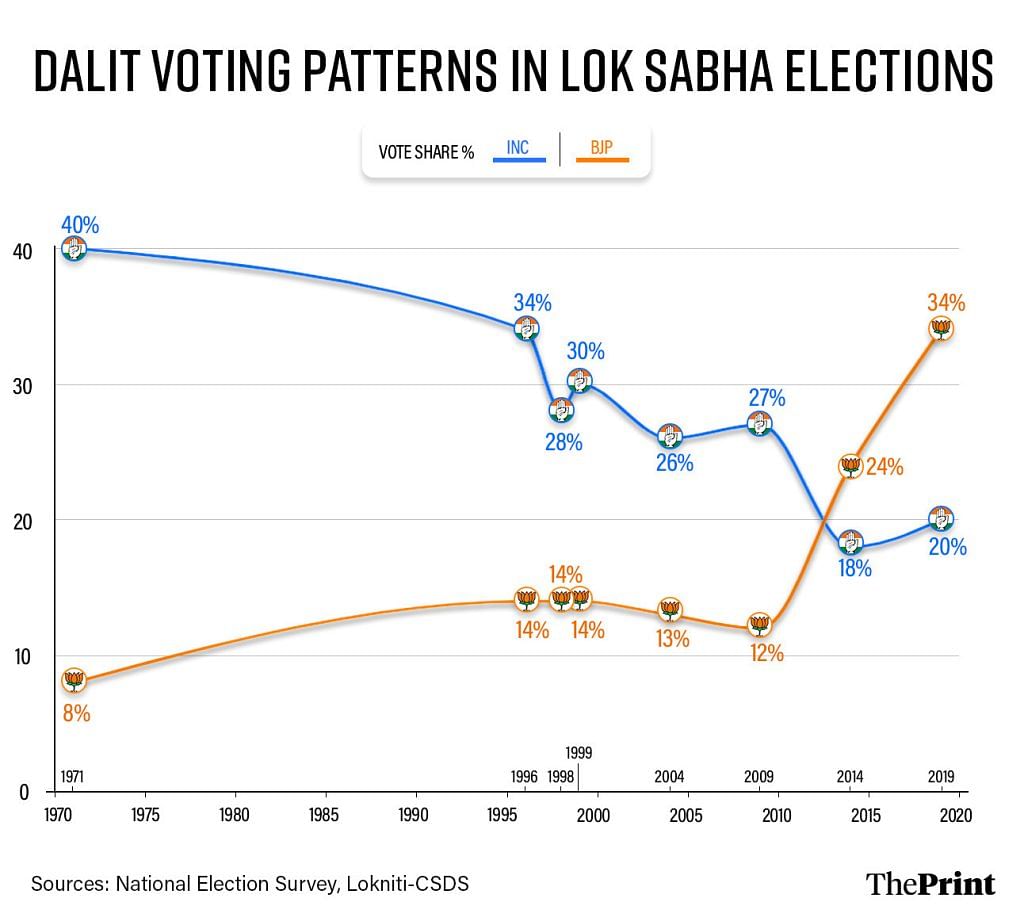
Projecting Kharge at this juncture could serve the party well. Even as the BJP’s vote share among Dalits increased between the 2014 and 2019 Lok Sabha elections, the Congress still enjoys support from the community in states where it is in direct contest with the BJP, according to the 2019 CSDS-Lokniti post-poll survey.
Further, ever since the Modi government came to power in 2014, Dalits across the country have been protesting against it on various issues, including the alleged institutional murder of Rohith Vemula, the ban on the Ambedkar Periyar Study Circle, the Bhima Koregaon case, and the dilution of the SC/ST Atrocities Act (now reversed).
The Dalit movement is very strong in the country and the Ambedkarite cadre will likely be vocal for the INDIA bloc because of the hope of getting the country’s first Dalit Prime Minister.
Another advantage for INDIA coalition is that the BJP will not be able to target the Congress with the “nepotism” charge if Kharge is its PM face.
Modi has been getting votes by drawing attention to his OBC background and humble upbringing. But Kharge too comes from a marginalised community and rose from poverty. Due to these reasons, the BJP will not be able to attack him openly for fear of alienating Dalit voters.
It’s worth noting that the Congress won the 2023 Karnataka assembly election shortly after appointing Kharge, who hails from the state, as its national president. In the election, 63 per cent of Dalits voted for the party.
Additionally, Kharge’s projection may also draw traditional voters of Mayawati’s Bahujan Samaj Party (BSP), which is not part of the INDIA bloc.
Kharge advantage for AAP and TMC
The general perception is that Arvind Kejriwal and Mamata Banerjee are steering away from promoting Rahul Gandhi since this could give Narendra Modi an edge. But apart from this, both their parties also need Dalit votes to win in their respective states.
In West Bengal, where Mamata’s TMC is in power, data shows that its Dalit vote share decreased between the 2014 and 2019 Lok Sabha elections, while the opposite held for the BJP.
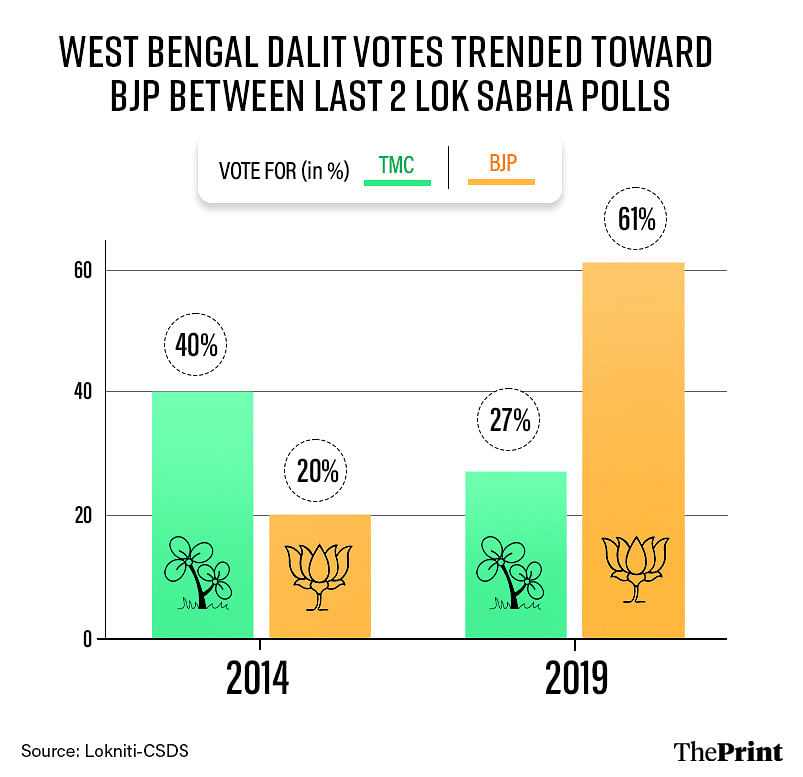
In the 2019 election, TMC secured 43.3 per cent votes against BJP’s 40.7 per cent vote share in West Bengal. But 61 per cent of Dalits voted for the BJP, which is 20 per cent more than its total vote share. This means that most of the BJP votes come from the Dalit community. Only 27 per cent of Dalits voted for Mamata Banerjee, which is 16 per cent less than her total vote percentage.
A similar trend is evident in the West Bengal assembly elections, as the table below shows, where the BJP won 77 seats in 2021. According to the 2011 Census, Dalits make up 24 per cent of West Bengal’s population, meaning that approximately every fourth voter in the state belongs to the community.
Mamata, it should be noted, is also contending with the fallout of the BJP’s attack on her as “anti-tribal” since she had backed Yashwant Sinha and not Droupadi Murmu as the presidential candidate. Backing a Dalit PM candidate could help alleviate the impact of this rhetoric.
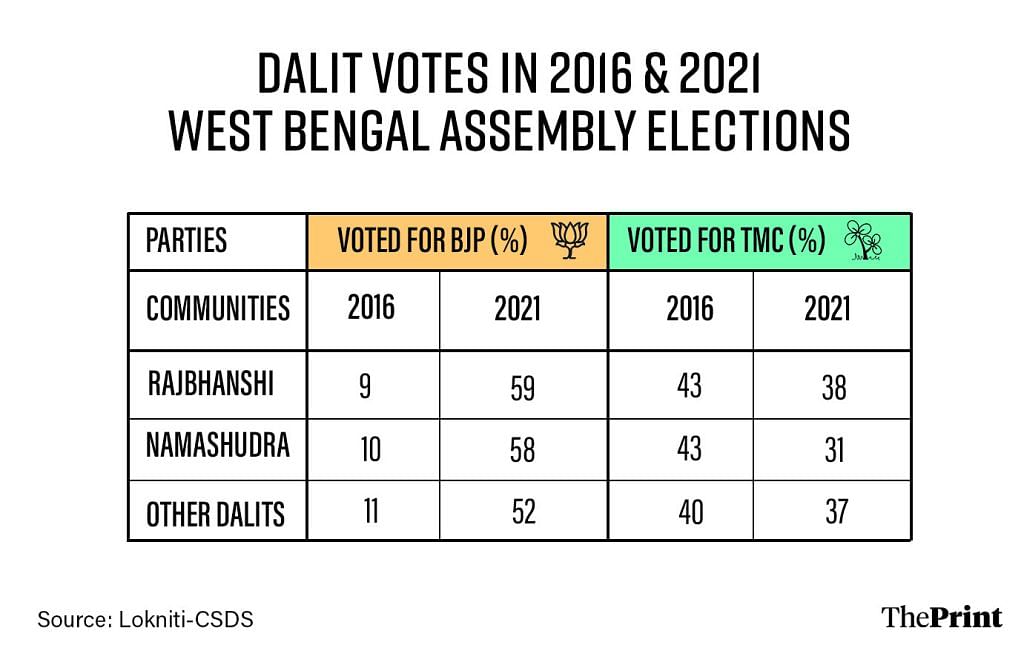
Moving to AAP, Dalit voters played a big role in the party’s success in Punjab and Delhi, where they comprise 32 per cent and 18 per cent of the population, respectively.
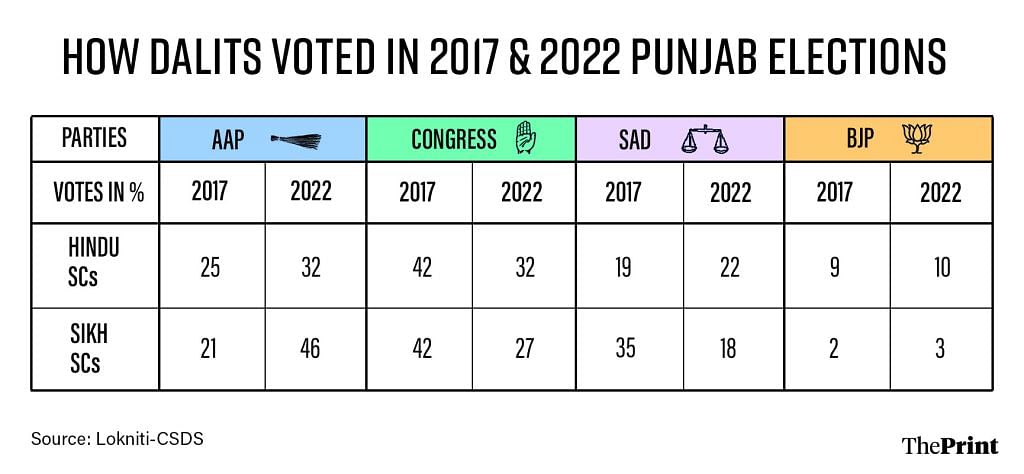
It is, therefore, conceivable that Kejriwal is aiming to maintain his influence among Dalit voters by endorsing Kharge.
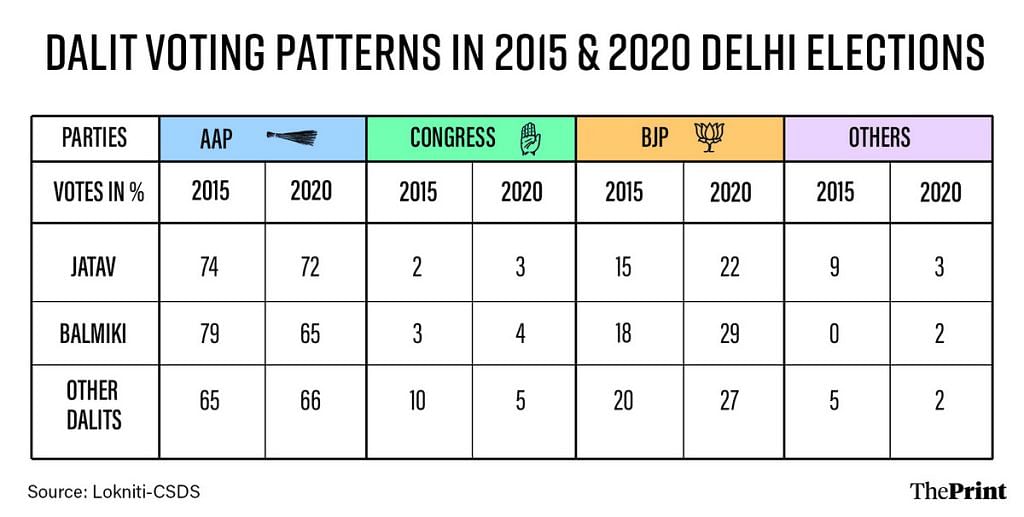
By supporting Kharge, TMC, AAP, and other INDIA bloc parties can hit many birds with one stone. Other than the Dalit vote advantage, it allows them to sideline the Gandhi family without eliciting much protest from the Congress since Kharge is the party’s national president. Further, Kharge’s projection helps to craft a progressive image, neutralise allegations of elitism, and underscore the ‘inclusive’ ideal touted by INDIA — an acronym for Indian National Developmental Inclusive Alliance.
Also Read: UP Dalits grew in confidence because of BSP. That’s why they are voting for BJP today
A strong PM candidate
Kharge’s caste identity and potential to provide an alternative to Rahul Gandhi are not his only qualifications. The 80-year-old leader has political experience of more than half a century. From active involvement in labour movements and student union elections, he has risen to become the national president of the country’s oldest party. Kharge also boasts extensive administrative experience and has shown he can win elections.
As a 10-time MLA in Karnataka, he held key departments, including a stint as state home minister, and also fulfilled the role of Leader of the Opposition in the assembly. He has also been elected twice as a Lok Sabha MP from the Gulbarga constituency in Karnataka and held the portfolios of railways and labour in the UPA government.
Currently the leader of the Opposition in the Rajya Sabha, he is known for his strong oratory skills and as a prominent voice against the Modi government both within and outside Parliament.
Due to his role as the Leader of the Opposition, he holds regular meetings with all the opposition parties, and enjoys a good rapport with most.
The late former deputy prime minister Babu Jagjivan Ram, a Dalit, famously missed becoming PM by a whisker. This reportedly led him to remark in frustration that no Dalit could ever become Prime Minister in India. Perhaps Kharge can prove him wrong.
Krishna Mohan Lal is a PhD research scholar at Tata Institute of Social Sciences, Mumbai. My Twitter account @Maitreya_G . Views are personal
(Edited by Asavari Singh)


